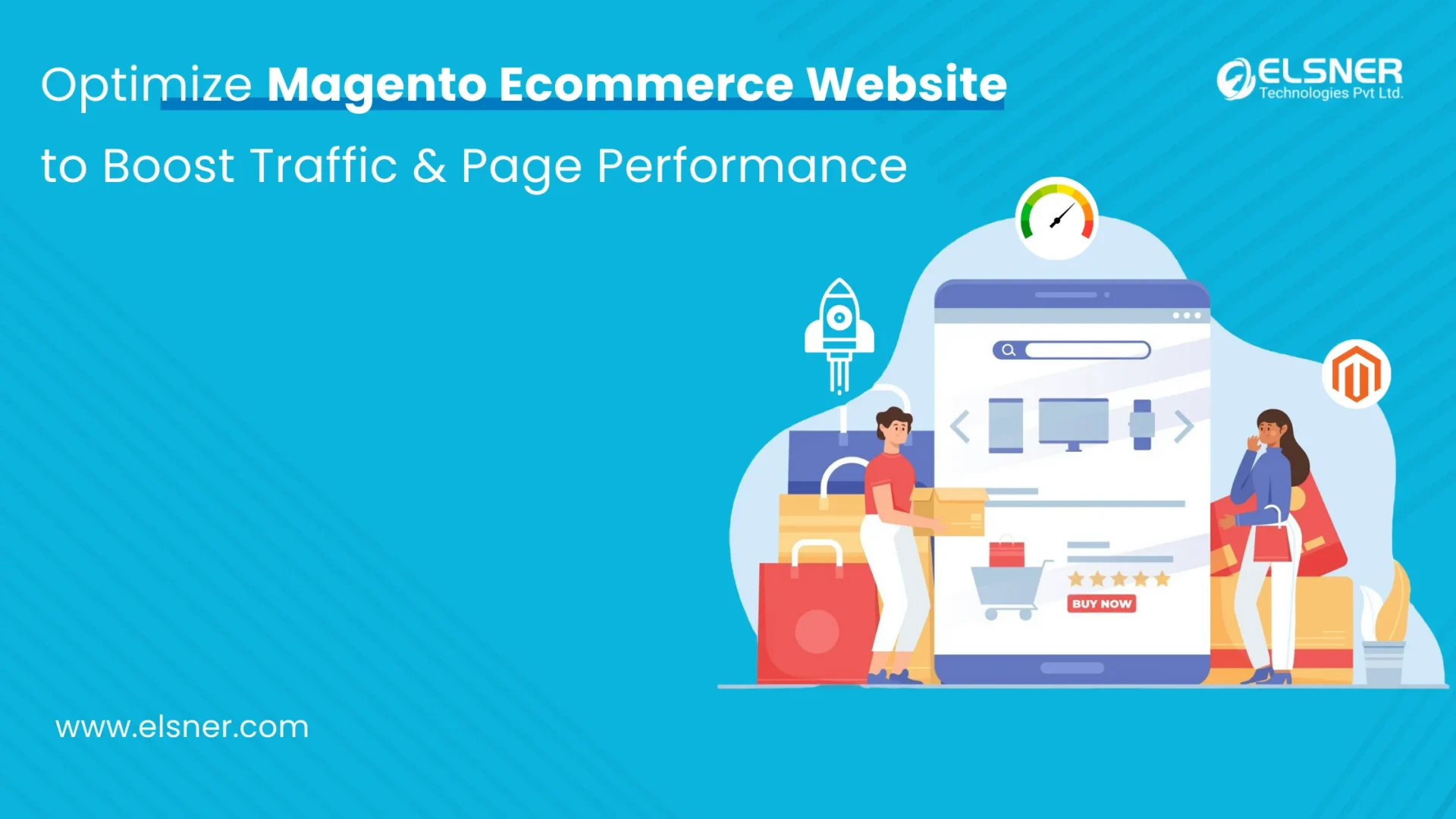- The Benefits of Integration
- 1. Improved productivity
- 2. Real-time data processing
- 3. Improved customer experience
- 4. Good financial management
- 5. Centralized Data Management
- 6. Improved Communication
- The Challenges of Integration
- 1. Complex systems
- 2. Data mapping and migration
- 3. Customization requirements
- 4. Safety issues
- 5. Technical compatibility
- 6. Ongoing maintenance and support
- 7. Monitor and improve performance
- Real-time Integration Using Business Central (BC) APIs
- 1. Product Integration
- 2. Order Integration
- 3. Customer integration
- 4. Inventory/stock management integration
- 5. Shipment status integration
- 6. Payment Integration
- Steps to Integrate Magento with Dynamics 365 Business Central
- 1. Determine business needs
- 2. Select the Appropriate Connection Method
- 3. Data mapping and configuration
- 4. Development and testing of Integration
- 5. Deployment and Monitor
- 6. Training and support
- 7. Ensure compliance and safety
- Conclusion
Companies need to simplify their operations to keep up with the competition. An effective way to do this is to integrate their online marketing programs into their performance management system.
Shantanu Narayen said: “If you can connect all the dots between what you see today and where you want to go, then it’s probably not ambitious enough or aspirational enough.“ This sentiment underscores the transformative power of integration, pushing businesses to aim for ambitious yet achievable operational improvements.
A great integration brings together Magento, a top online store, and Microsoft Dynamics 365 Business Central (BC), a powerful business platform. This integration can improve how the business runs by making it more efficient, constantly updating information, and keeping customers happy. This article will discuss how to do this step by step focusing on using BC’s tools and critical connection points to keep everything up to date in real time: why this connection is good, problems which possibilities, and how to do it step by step.
The Benefits of Integration
1. Improved productivity
- Magento integration with Dynamics 365 Business Central automates various processes, reducing the need for manual data entry.
- This leads to fewer errors and frees up time for employees to focus on more formal tasks.
- Well-designed business processes increase productivity in all departments.
- Automation reduces operating costs by reducing manual operations.
2. Real-time data processing
- Through integration, inventory levels, product information, customer data, and orders are updated in real-time on both systems.
- This ensures accuracy and accuracy of information, which is critical for informed business decisions.
- Instant updates help maintain optimal stock levels and prevent stockout or overstock situations.
- Real-time data helps generate faster responses to market changes and customer requirements.
3. Improved customer experience
- Access to real-time information enables better customer service.
- For example, accurate inventory prevents oversales, provides customers with timely updates on orders, and enhances their shopping experience.
- Faster processing and fulfillment of orders improves customer satisfaction.
- Individual customer interactions are based on complete data from both systems.
4. Good financial management
- Integration provides simple financial information, making it easier to manage accounting, invoicing and financial reporting.
- This allows for better budgeting and control.
- Accurate and up-to-date financial information supports compliance and audit preparation.
- Increased visibility of financial performance helps identify opportunities for cost savings and improved profitability.
5. Centralized Data Management
- Single source of truth for all business data, reducing contradictions and data silos.
- Easily create detailed reports including data from eCommerce and ERP systems.
- Simplified IT management by reducing the number of disparate systems that need to be managed.
6. Improved Communication
- Ease of data flow between departments increases collaboration and communication.
- Teams can work better when they have access to the same up-to-date information.
- Reduces departmental friction caused by data inconsistencies and miscommunication.
The Challenges of Integration
1. Complex systems
- Both Magento and Dynamics 365 Business Central are robust frameworks with extensive functionality.
- A thorough understanding of both traditions is necessary for integration.
- The integration may involve the formation of multiple stakeholders including IT, sales, finance and operations teams.
- Going through extensive documentation and understanding API capabilities can be time-consuming.
2. Data mapping and migration
- Ensuring that data from Magento maps correctly to the corresponding field in Dynamics 365 Business Central can be challenging.
- Data migration must be carefully planned and coordinated to avoid inconsistencies.
- The integration may involve the formation of multiple stakeholders including IT, sales, finance and operations teams.
- Going through extensive documentation and understanding API capabilities can be time-consuming.
3. Customization requirements
- Companies often customize their Magento store and ERP system to meet specific needs.
- These changes can complicate the integration process, and require additional development work.
- Maintaining custom integration over time, especially in new and upgraded versions of the system can be challenging.
- Balancing custom features and integration requirements may require flexibility and flexibility.
4. Safety issues
- Integrating two systems involves sharing critical information.
- Ensuring data security and compliance is paramount to preventing data breaches and protecting customer information.
- Maintaining custom integration over time, especially in new and upgraded versions of the system can be challenging.
- Balancing custom features and integration requirements may require flexibility and flexibility.
5. Technical compatibility
- Technology stack and communication infrastructure differences between Magento and Dynamics 365 Business Central.
- To ensure that the modules and plugins used in Magento are compatible with the ERP system.
- Fix potential performance problems due to integration, especially during peak traffic periods.
6. Ongoing maintenance and support
- Integration is not a one-time operation; Requires continuous maintenance to address bugs, updates and improvements.
- Allocating resources for ongoing support and troubleshooting as they arise.
- IT staff training to address specific integration challenges and ensure smooth operations.
7. Monitor and improve performance
- Continuously monitor the performance of integrated systems to ensure they meet business requirements.
- Identify and address any problems with the data synchronization process.
- Modifying the integration settings to improve overall system performance and user experience.
Real-time Integration Using Business Central (BC) APIs
Real-time integration between Magento and Dynamics 365 Business Central is facilitated using BC APIs. These APIs provide seamless communication between the two systems, ensuring real-time data synchronization.
Here are the main overlaps and how BC APIs can be used.
1. Product Integration
- Match product information such as name, description, price and SKU from BC to Magento.
- Any changes to product details in BC are immediately reflected in Magento.
- Products created or updated in BC trigger API calls to Magento, ensuring that the eCommerce platform is always updated with the latest product information
- Monitor variety and features to maintain consistency across both platforms.
- Synchronize product images with metadata to ensure a complete product catalog in Magento.
2. Order Integration
- Orders placed in Magento are automatically pushed to BC for processing.
- This includes order information, customer information and payment status.
- Magento uses BC APIs to send order data to BC as soon as the order is confirmed, enabling timely processing and fulfillment of the order.
- Monitor order status and updates in real-time to ensure accurate order management.
- Automate order confirmations and reports to improve customer communication.
3. Customer integration
- Sync customer data between Magento and BC.
- Includes customer information, contact details and purchase history.
- Customer registration and updates created in Magento are reflected in BC, providing a unified view of customer data across both platforms.
- Manages customer segmentation and targeting based on aggregate customer data.
- Ensure all customer loyalty programs and rewards are constantly updated
4. Inventory/stock management integration
- Real-time inventory synchronization between BC and Magento to ensure accurate stock availability.
- Inventory updates are instantly pushed to Magento via API, preventing over sales and ensuring customers have accurate information about inventory availability
- Manage multiple warehouses and consolidation centers to ensure efficient distribution of inventory.
- Implemented inventory alerts and reports to effectively manage stock levels.
- Coordinate inventory adjustments and returns to maintain accurate stock records.
5. Shipment status integration
- Update shipment status from BC to Magento in real time, and notify customers of order status.
- As the shipment is processed in BC, status updates are sent to Magento, which then updates the customer through its order management system.
- Automate shipping data and tracking information to enhance the customer experience.
- Monitor shipping methods and carriers to ensure accurate and up-to-date delivery information.
- Monitor and manage shipment omissions and delays to maintain active customer contact.
6. Payment Integration
- Synchronize payment information from Magento to BC to ensure financial information is up-to-date and accurate.
- Payment transactions recorded in Magento are sent to BC, ensuring all financial records are accurate and up to date for audit purposes.
- Manage multiple payment methods and gateways to meet customer preferences.
- Automate payment confirmation and receipts to streamline the budget process.
- Ensure compliance with financial regulations and standards in both systems.
Steps to Integrate Magento with Dynamics 365 Business Central
1. Determine business needs
- Determine your business needs before starting the integration.
- Identify the data and processes necessary to achieve integration and identify the goals you aim to achieve with this integration.
- Understand the specific needs of various departments and stakeholders to ensure integration is aligned with overall business objectives.
- Review existing business processes and systems to see how the integration will affect current operations.
2. Select the Appropriate Connection Method
- There are several ways to integrate Magento with Dynamics 365 Business Central.
- Custom Integration: To create customized solutions to suit your specific needs.
- Third-party connectors: Use of pre-built connectors or integration tools available in the market.
- Middleware solution: Use of middleware to facilitate communication between two systems.
- Evaluate the advantages and disadvantages of each approach in terms of cost, complexity and flexibility.
- Consider the length of maintenance and support required for each method of integration.
3. Data mapping and configuration
- Map data fields between Magento and Dynamics 365 Business Central.
- It involves determining how data from one system will translate to another.
- System settings for synchronization intervals, data filtering, and conflict resolution should also be established.
- Ensure complete data mapping covering all important data points including products, orders, customers, inventory and payments.
- Validate data mapping to ensure accuracy and completeness.
4. Development and testing of Integration
- Create integration solutions, ensuring they align with your business strategy.
- Perform thorough testing to identify and resolve any issues.
- Testing should include data manipulation, transaction processing, and error handling.
- Perform unit testing, integration testing, and user acceptance testing (UAT) to ensure that all components work together seamlessly.
- Create detailed test plans including test cases, expected results, and documentation of any issues found.
5. Deployment and Monitor
- Use the integration in a live environment.
- Monitor the integration carefully during the initial phase to ensure proper operation.
- Regular monitoring and maintenance are essential to promptly address any issues and ensure continued smooth operation.
- Establish real-time analytics tools and dashboards to track integration performance and health.
- Establish a process for expeditiously addressing and resolving integration issues.
6. Training and support
- Provide training to your employees on the new integrated system.
- Make sure they understand how to properly use the system and who to contact for help if needed.
- Develop training materials, including user manuals, tutorials and quizzes.
- Provide hands-on training and workshops to familiarize employees with the integrated system.
- Establish a support team or help desk to help users with any questions or issues that may arise after installation.
7. Ensure compliance and safety
- Ensure integration complies with applicable data protection regulations and industry standards.
- Implement strong security measures to protect sensitive data during transmission and storage.
- Conduct regular security audits and vulnerability assessments to identify and mitigate risks.
Conclusion
Integrating Magento with Microsoft Dynamics 365 Business Central using BC APIs provides many benefits from improved productivity to enhanced customer experience. By focusing on key integration touchpoints such as item/product, order, customer, inventory, shipment status, and payment integration, businesses can ensure real-time synchronization and seamless operations.
Although the integration process presents challenges, a structured approach, careful planning, and leveraging the right tools and expertise can lead to successful integration. Embrace this integration to drive your business forward in the competitive ecommerce landscape.

About Author
Manoj Mondal - Team Lead - Magento
Manoj has a deep-rooted expertise in the ecommerce landscape, particularly in building and optimizing online experiences. His keen understanding of technology, paired with a hands-on approach, has enabled him to navigate complex projects with ease. Known for his collaborative spirit and technical acumen, he consistently drives projects to success.




